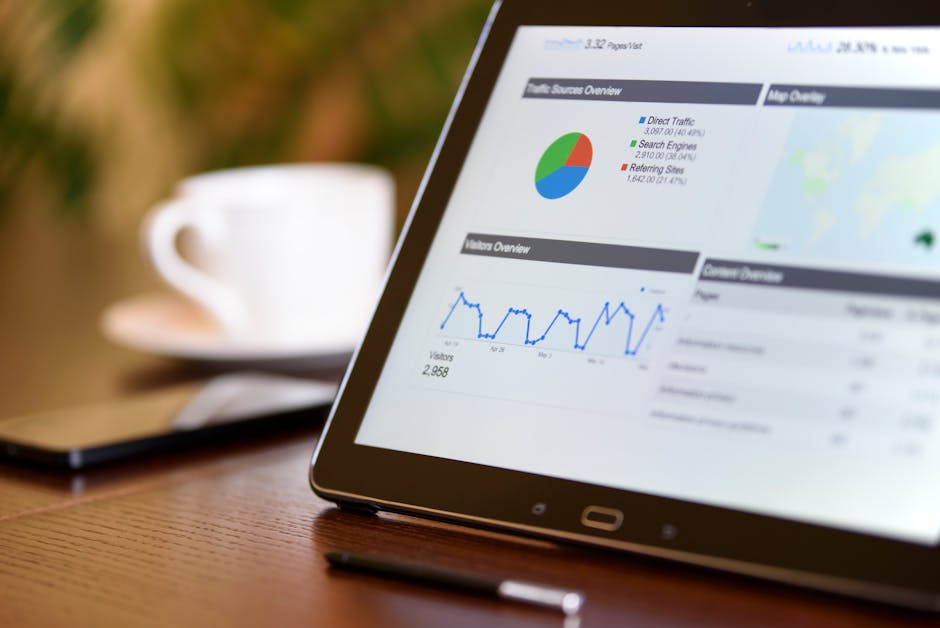Latest Trends in Digital Marketing You Need to Know About
Digital marketing is moving fast, and keeping up with the latest trends feels less like a luxury and more like a necessity for anyone looking to make an impact online. Whether you're looking to become an influencer, running a small enterprise, or just interested in the reasons behind the advertisements flooding your Instagram feed, grasping these trends can truly transform your experience. Let’s break down what’s hot in digital marketing right now.
1.

The Rise of Short-Form Video
Short-form video content is dominating platforms like TikTok, Instagram Reels, and YouTube Shorts. Why? It’s quick, engaging, and fits perfectly into people’s limited attention spans. Think about it: how often do you watch a 15-second TikTok versus a 15-minute YouTube video? The numbers don’t lie. A report from HubSpot reveals that marketers rank short-form video as the most effective content type for engagement.
What does this mean for businesses? Adapt or get left behind. Small brands are leaning into this format to humanize their products (think behind-the-scenes snippets or quick how-tos) and larger corporations are using it to spark conversations with younger audiences. It’s not about having polished production; authenticity wins here.
2. Artificial Intelligence in Content Creation
AI-powered tools are revolutionizing content creation. From AI writing assistants like ChatGPT to graphic design platforms like Canva offering AI design suggestions, these tools are helping marketers create faster and smarter. But don’t mistake efficiency for laziness, audiences still crave originality.
AI might help generate ideas or automate repetitive tasks, but the magic happens when you add your personal touch. Think of AI as your sous-chef in the kitchen; it chops the vegetables, but you’re still the one crafting the recipe. Brands leveraging AI without losing their unique voice are leading the pack.
3. Influencer Marketing Gets Micro
The days of brands throwing millions at mega-celebrities for endorsements aren’t over, but there’s been a noticeable shift toward micro- and nano-influencers, those with smaller yet highly engaged followings. Why? Their recommendations feel more genuine.
A survey by Statista showed that micro-influencers often have higher engagement rates than their larger counterparts. A skincare brand might partner with a beauty enthusiast who has 10K followers rather than a supermodel with millions. The result? A deeper connection with potential customers who trust that influencer’s opinions.
If you’re considering influencer partnerships, focus on those who align authentically with your brand values rather than chasing follower counts.
4. Optimizing for voice queries.
As smart speakers and voice-activated assistants become common in homes around the globe, optimizing for voice search has become a necessity for marketers. Imagine this scenario: a person inquires with their voice assistant, such as Alexa or Google Assistant, about the closest top-rated pizza delivery options. If your establishment hasn’t been tailored for inquiries made through voice recognition, you're likely losing valuable opportunities.
Enhancing your content for voice search involves prioritizing natural, conversational phrases and incorporating extended keyword phrases that reflect the way individuals typically communicate. Rather than focusing on the term “pizza delivery,” think about variations such as “Where can I get pizza delivered late at night in my area?” Resources such as Google’s Keyword Planner can assist in discovering these alternative expressions with ease.
5. Sustainability Messaging Matters
A growing number of consumers care deeply about sustainability, pushing brands to walk the talk when it comes to eco-friendly practices. But here’s the catch: authenticity is non-negotiable. Greenwashing (making misleading claims about being environmentally friendly) can backfire in spectacular fashion.
Take Patagonia as an example. The company doesn’t just market its commitment to sustainability; it weaves it into every fiber of its operations, from recycled materials to repair programs that extend the life of its products. This genuine approach resonates deeply with customers and earns loyalty far beyond just selling gear.
If sustainability is a fundamental aspect of your brand's mission, make it a priority to share that message clearly, whether via product labels, content on your website, or narratives shared on various platforms.
6. Personalization Through Data
Nobody enjoys the experience of being bombarded with unwanted advertisements or irrelevant emails. Customizing marketing strategies to reflect individual user preferences is showing far greater success compared to traditional, one-size-fits-all methods. According to a study by McKinsey, businesses that effectively use personalization can drive up to 40% more revenue compared to those that don’t.
This principle isn't limited to large companies with extensive analytics departments; even smaller enterprises can leverage platforms such as Mailchimp or Shopify to tailor customer experiences by taking into account their shopping habits or online activities. Do you recall those messages that mentioned, “We thought this might interest you considering your recent purchases”? That’s personalization done right.
The essential point to grasp is straightforward: although trends may fluctuate, having a deep comprehension of your audience is always relevant. Choose the strategies that align best with your goals and take small but meaningful steps toward implementing them effectively. After all, digital marketing isn’t about jumping on every new trend, it’s about finding what works for your story and running with it.